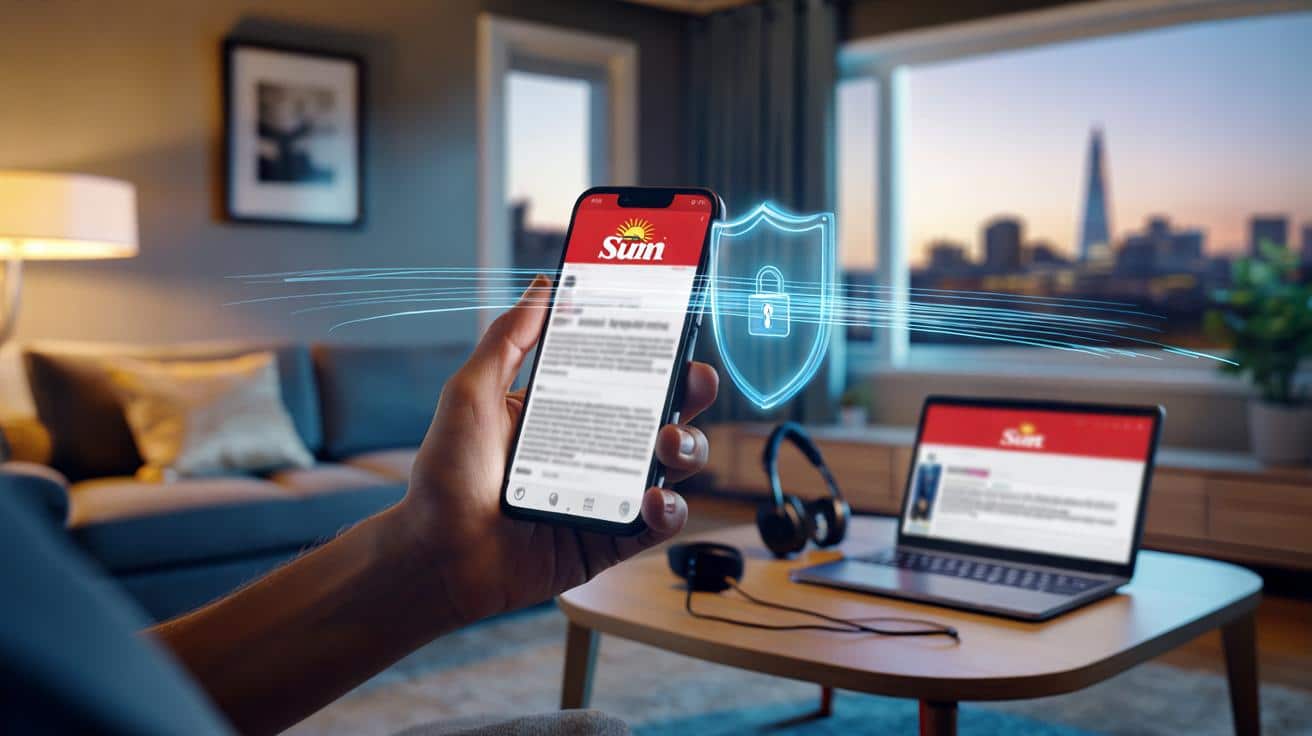Here is what it means and how to move on.
Now and then, a verification page pops up before an article loads and the moment feels abrupt. The message looks technical, but it speaks to something simple. It is the publisher saying that automated tools are not welcome on its service, and that genuine readers should not be locked out. The wording comes straight from News Group Newspapers Limited, which owns The Sun.
In the middle of darkening evenings and busy news cycles, a block like this can feel frustrating. The notice explains that behaviour flagged as automated may lead to a temporary stop, even when a person is on the page. It also sets out a clear path for those reading in good faith and for companies seeking permission. That last part matters.
What this The Sun message really means for automated access
The page states that the system has identified user behaviour that looks automated. It then says that News Group Newspapers Limited does not permit automated access, collection, or text or data mining of any content from its service whether done directly or through an intermediary. The notice points readers back to its terms and conditions. The tone is firm because the rule is broad and applies across the site.
There is a second point that softens the edge. The message accepts that human behaviour can be misclasified as automated on occasion. So a genuine visitor may see the block even if they are simply scrolling quickly or opening a few tabs in a rush. This is where the guidance for real users becomes practical. It nudges readers toward a support channel rather than leaving them stuck.
The wording frames the interruption as a safeguard rather than a punishment. It protects content from non human tools while still giving people a way back to their article. That balance matters for UK audiences who expect quick access to headlines and sport on phones and laptops. The promise is simple enough to follow.
The strict line on text and data mining for AI and LLMs
The message is explicit about the tools it covers. It prohibits access, collection, or text and data mining of content including for AI, machine learning, or LLMs. The rule does not make exceptions in the text shown to visitors. It treats automated means the same whether they run in house or via any intermediary service. In short, the publisher is drawing a clear boundary around how its journalism can be used.
For readers in Britain that clarity matters. Many services now embed AI driven features in apps and extensions, and some of those features fetch text in the background. The line set out here leaves no doubt. If a tool scrapes, collects, or mines content automatically, it falls under the block described by the notice. The route for legitimate access sits elsewhere.
The policy sits within the publisher’s terms and conditions, and the notice points back to that legal base. It gives the stance weight without drowning the user in legalese. And it spells out who to contact if a business wants to license or crawl. That avoids guesswork.
The simple contact route if you are a legitimate reader
The notice recognises that errors happen. It says that sometimes the system misinterprets human behaviour as automated, and that a genuine visitor should get in touch. For anyone in that position, the next step is to contact customer support and ask for help. The page provides the correct email for that route so the message does not get lost.
- Legitimate reader support [email protected]
Keep the note short and factual. Explain that you saw the verification page and that you were browsing normally. Include the time of the block and, if you can, the section you tried to read. It is the quickest way to clear a false flag and get back to the story. Most readers just want the article to load without a fuss.
It also helps to return to the article in the same browser once support replies. That way any fix the team applies can be seen straight away. The aim is not to debate policy. It is simply to confirm that you are a real visitor and restore access to the page you wanted.
Commercial use and permissions, the only route that works
The message draws a firm line between everyday reading and commercial use. If a company wants to access content automatically, the page directs it to a dedicated permissions inbox. The text makes clear that this is the approved route for licensing or technical crawling. Anything else would fall under the prohibition already described in the notice.
For clarity, the correct addresses are set out in the message. Businesses should write to [email protected] for commercial enquiries. Readers who hit the block in error should contact [email protected] to restore access. Sticking to those paths keeps things tidy and avoids back and forth to the wrong adress.
It all adds up to a straightforward position. Automated access is not allowed. Text or data mining is not allowed, including for AI, machine learning, or LLMs. Real people can ask customer support to review a mistaken block. Companies can request permission via the licensing channel. And for anyone wondering what sits behind it, the message says the policy is set out in the terms and conditions.









